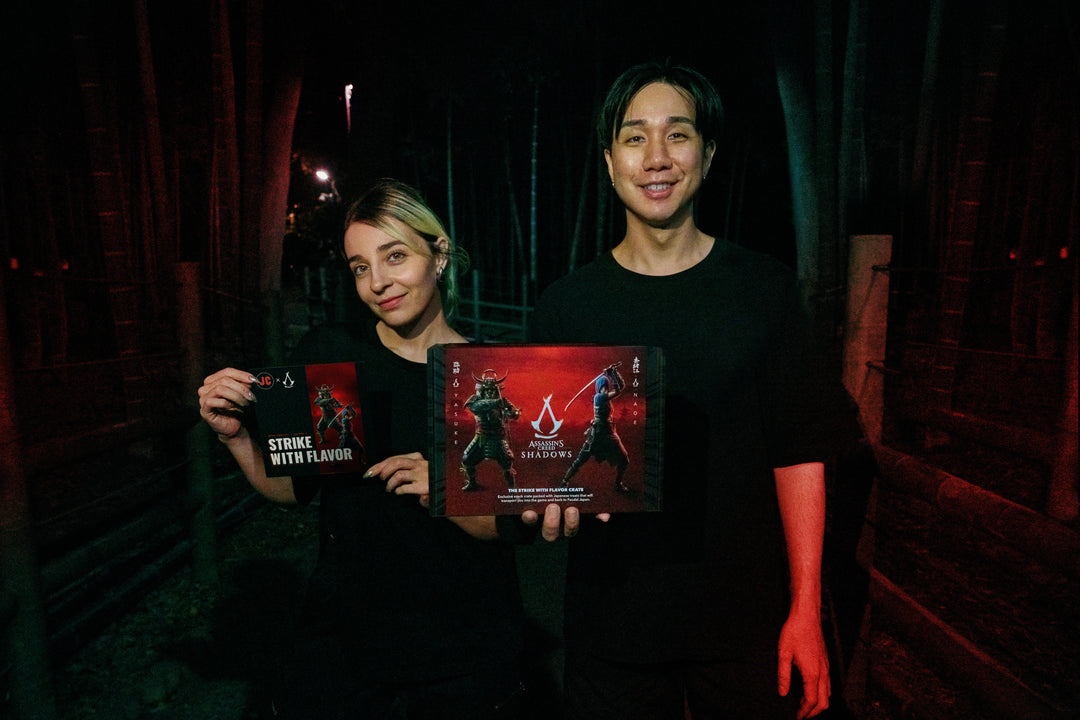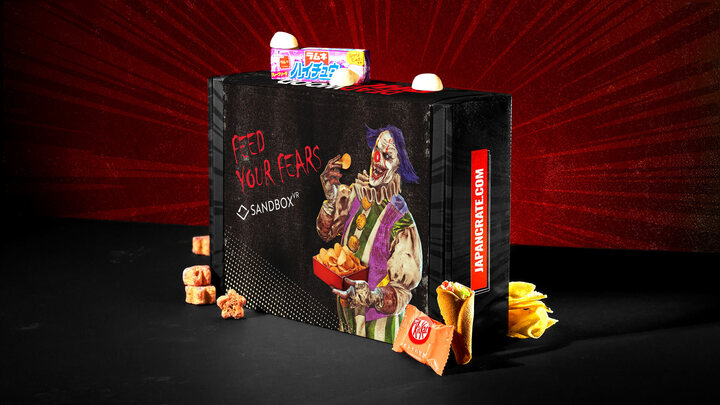Japanese Snacks vs Korean Snacks

Asian cuisine is well-liked worldwide due to its unique tastes and nutritious recipes. They are not simply popular in Asia, but almost all nations enjoy these delectable cuisines, and Asian snacks are no exception. Japanese and Korean snacks are two of the most popular. These two countries produce delicious, healthful snacks that blur the distinction between art and food. Do you know why? It is because one of life's fundamental joys is snacking, and both Japanese and Korean snacks come in a huge variety of shapes, sizes, and tastes. No matter where country you are, healthy or not, eating snacks is just enjoyable. As we grow older, we learn to appreciate the snacks from our own nation, but it is always fascinating to learn how different cultures enjoy their snacks. Here are the must-try snacks from Japan and Korea.
Must-Try Japanese Snacks
Pocky

Pocky is a name that will come up in practically every conversation while talking about Japanese candies and snacks. This Pocky Stick is basically a chocolate-covered biscuit stick. A delectable delicacy that was first created in Japan but is now popular all over the world. The end of this Pocky is not covered in chocolate, so there is no melting and no mess on your fingers when eating the chocolate-dipped sticks. Two packets of Pocky are typically included in a box for two separate snacking occasions. They are perhaps so well-liked because they have such a wide selection of tastes. There is the Pocky Chocolate original taste, but there's also the taste of the matcha, or green tea, and the equally well-known Pocky Strawberry flavor, which is both very well-liked in and outside of Japan. There are undoubtedly supporters of the snack who prefer it due to its odd flavor options, such as melon, cherry blossom, or butter chocolate.
Senbei

The most well-known traditional Japanese crackers are called senbei made of white rice. Senbei, are excellent on-the-go crunchy snacks because they are frequently individually packaged. Worrying about resealing a package bag after eating one or two is unnecessary, as you would with a regular bag of potato chips. Senbei is available in various flavors, such as sugar, soy sauce, seaweed, and seafood. Any rice cracker will offer a crispy taste of old-school Japan, which goes especially well with a hot drink. You'll never get bored traveling when there are so many different senbei to taste. For added convenience, check out arare, a smaller finger food variation of senbei. Choose a few senbei flavors, and then stash them in your bag or backpack whenever your tummy grumbles and have a great time.
Onigiri

One of the most iconic Japanese foods is onigiri. Onigiri can be found in every convenience store in Japan as well as some restaurants. You will find onigiri in every flavor lining the shelves of the fridge area of any konbini you enter. Onigiri is wrapped balls of sticky rice kept together by a sheet of nori (seaweed). What flavor you are holding should be obvious from the plastic packaging. While there are many different onigiri flavors and fillings to discover on your travels, the most common onigiri flavors in Japanese snacks convenience stores are plain (salted), salmon, tuna mayo, teriyaki chicken, and pickled plum.
Must-Try Korean Snacks
Pepero

One of the most well-known cookies in Korea is called Pepero. It is not simply a cookie, though; it has a very significant uniqueness. It is a long, stick-shaped cookie with chocolate on top. It is one of Korea's most favored snacks because of this. Basic flavors like chocolate, dark chocolate, almond, and vanilla are the foundation for Pepero's flavors. And more than 30 flavors of Pepero are now available. Pepero is available in a wide range of flavors, including plain chocolate, nude and almond chocolate, strawberry, cream and cookies, cheese, cacao, coconut, green tea, and more.
Crown Butter Waffles

Crown butter waffles are buttery, thick, and crispy. Waffles with crown butter are every bit as good as you would want. This sweet delight is a waffle sheet that has subtle butter hints on top. After a few crispy bites, it initially starts out crunchy but soon begins to melt on your tongue. The ideal white bread, vanilla, and butter ratio will delight your palates. The ideal answers to your post-meal dessert yearning are these traditional Korean snacks. You can also consume little amounts of it while drinking milk, tea, or coffee. If you want to try Korean delicacies, butter waffles are a must-have.
Tteokbokki

Tteokbokki, literally "stir-fried rice cake," is a popular authentic Korean food with various varieties and a long history. Tteokbokki is a rice cake snack that is sweet, spicy, and sour and will keep you warm on chilly evenings. This hot rice cake dish is incredibly well-liked as street food and a meal at home. The star ingredients in this fiery dish, which seem hotter than it is, are log-shaped Korean rice cakes and Korean fish cakes, which are served with a considerable amount of crimson gravy colored by gochujang (Korean chili paste). And since authentic Korean fish cakes include onions and carrots, it is naturally sweeter than other Asian fishcakes. Given how satisfying these rice cakes are, a small serving size is usually sufficient.
These snacks are just the best in both countries, and once you've tried them, you can't resist their freshness and deliciousness. From the Japanese snacks that you'll want to try everything because it literally looks good wherever you look. And South Korea's difficult-to-dislike snacks offer both sweet and savory tastes that suit your mood. Both countries really step up their game when it comes to their local snacks. And I'm sure you'll also notice that there are somehow look-alike products. And you guess it right! The Japanese Pocky and Korean Pepero look the same. Both are stick biscuits, flavor-coated, and offer a wide range of unique flavors. So what's the difference? Here's the battle between Japanese Pocky and Korean Pepero.
Japanese Pocky vs Korean Pepero: Which is the best?

Two snacks, Pocky and Pepero, have a similar exterior appearance but clearly have differences. Both Pocky and Pepero are milk chocolate-dipped biscuit sticks. The Original flavor of each is coated in chocolate. It could be difficult to tell the two apart based solely on appearance. One significant difference between these two is that Pocky is a popular Japanese snack, and Pepero is Korean's famous snack. But which is the best? Japanese or Korean? Let's find out!
Japanese Pocky vs Korean Pepero: Flavors

The Glico manufacturers introduced and first offered Japanese Pocky in Japan in 1966. Pocky has manufactured a wide range of flavors for Pocky since 1966. Strawberry, chocolate, cookies and cream, orange, banana, green tea, and coconut are a few flavors. Other unique flavors found in Pocky include lychee, sweet potato, black sesame, and kiwifruit mango.

In contrast, the Lotte candy firm has been selling Korean Pepero in South Korea since 1983. Pepero also offers a range of tastes for its biscuit sticks, including blueberry yogurt, tiramisu, melon, white chocolate, almond and chocolate, mint chocolate, and peanut butter.
Japanese Pocky vs Korean Pepero: Packaging

Pepero and Pocky are presented in a foil bag encased in a thin cardboard box. With the Pocky logo, the Pocky box represented the biscuit sticks. The Pepero box expresses the snack, the chocolate, and the fact that it is Korea's top-selling brand. Pocky chooses simplicity, while Pepero invests heavily in advertising. The Pocky logo is printed in crisp white on the interior foil bag, while the Pepero foil bag is red and bears the company's logo.
Japanese Pocky vs Korean Pepero: Taste

Both snacks are really the best in their regions, both look wonderful and be of great value. But what brand is the tastiest? With its original chocolate cookie, Pocky strikes first, placing Pepero as the underdog. The delicious, buttery Pocky biscuit complements the chocolate nicely. The Pocky chocolate has a mildly bitter flavor and is smooth on the palate. The combination of the chocolate and biscuit is unbeatable and enhances the overall experience.

On the other hand, Pepero has a larger biscuit stick that offers nearly the same flavor, but the chocolate is a little more milky and sweet. Pepero lacks the bitterness that Pocky has. The primary distinction is that Pocky has a more slender biscuit and is more bitter. Both treats, depending on your taste, are excellent. The primary distinction is that Pock has a more slender biscuit and is more bitter. Depending on your taste, both treats are excellent, but if you prefer bitter chocolate, choose Pocky and if you prefer sweet chocolate, choose Pepero.
Taiyaki (Japanese) vs Bungeoppang (Korean): Which is the best?
Taiyaki and bungeoppang are two other snacks from Japan and Korea that have a similar appearance and flavor options. Both snacks are in the shape of an adorable fish and include creamy fillings inside. While they appear similar, they have distinct characteristics that help clearly define which snack is which. So, which is the better snack?
Taiyaki (Japanese) vs Bungeoppang (Korean): Flavors

There is a significant difference between the flavor options available for each treat. Expect more traditional flavors and inclusions when biting into taiyaki, such as green tea, red bean paste, and custard. In comparison, bungeoppang features more modern fillings, which range from sweet to savory. A bungeoppang may have anything from chocolate to ham and cheese inside its chewy waffle exterior.
Taiyaki (Japanese) vs Bungeoppang (Korean): Appearance

Though they are both in the shape of a fish, it's worth noting they are each inspired by different types of fish, which produces slightly different shapes for the Japanese versus Korean versions of this snack. Taiyaki gained its name from the tai fish, also known as sea bream, while bungeoppang is shaped like a crucian carp.
Taiyaki (Japanese) vs Bungeoppang (Korean): Taste

Both the Japanese and Korean snacks have a golden-brown waffle exterior. However, taiyaki typically has a crispier exterior, while bungeoppang is a bit chewier, as it includes sweet rice flour in the batter mixture. Additionally, the batter has a slightly different flavor. The exterior of the taiyaki is slightly sweeter, which pairs perfectly with the sweet fillings. In comparison, bungeoppang has a more savory/salty batter, which aligns with the taste preferences of Korean people.
All in all, the winner of this snack competition depends on one factor: whether you prefer treats on the sweeter side or savory options.
Nissin (Japanese) Noodles vs Samyang (Korean) Noodles: Which is the best?
Nissin and Samyang are each famous for their deliciously chewy noodles, bold seasoning, and addictive flavors. While the products seem quite similar, the two have many differences, such as the offerings and age of each company. Nissin is considered the ultimate instant ramen producer, as the company was the first ever to introduce such a product to the world. In comparison, Samyang released its first version of instant noodles in 2012.
Nissin (Japanese) Noodles vs Samyang (Korean) Noodles: Flavors

Both Nissin and Samyang offer an impressive variety of flavors for their instant noodles. However, the types of flavors available differ. Nissin focuses on a combination of traditional and contemporary flavors, with favorites like shrimp, beef teriyaki, and sweet chili. Samyang favors extra spicy noodle options, such as their buldak hot chicken. Though they do have flavors that range in heat, they tend to offer over-the-top spice levels for their noodles, creating a challenge for spicy lovers of all kinds.
Nissin (Japanese) Noodles vs Samyang (Korean) Noodles: Packaging

Each of these noodle companies provides varying packaging for their products, including bowls that are easy to transport and packages that make it easy to craft a delicious meal/snack at home. However, Nissin tends to stick to more traditional, straightforward packaging and fonts. On the other hand, Samyang offers bold, vibrant colors that mirror the vibrant flavors inside each package. Every Samyang noodle package has an image of the spunky chicken mascot named Hochi.
Nissin (Japanese) Noodles vs Samyang (Korean) Noodles: Taste
Nissin offers a more savory taste in its flavors, though it has recently begun creating spicier options to rival those of Samyang. Additionally, the noodles in Nissin products tend to have a chewy yet soft texture. Samyang noodles are by far spicier, though there are options that have a slightly less spicy taste due to the inclusion of dairy (providing a creamier consistency). The noodles Samyang makes are also famous for their chewiness.
Ultimately, the two noodles tie in our books. The best noodle option depends on the amount of heat you can take. If you prefer more traditional flavors and softer noodles, Nissin is the winner. For bolder, hotter, chewier noodles, Samyang is a fantastic choice.
Settle the Debate of Japanese Snacks vs Korean Snacks at Home with Japan Crate
Perhaps you can't decide between the delicious Japanese snacks, like Lotte Choco Pie, and Korean snacks available online. If that's the case, a Japanese snack box subscription may provide more substantial (and tasty) data for your stomach. With a carefully curated selection of 15-17 goodies each month, ranging from sweet to savory snacks, a Japan Crate subscription allows you to eat new treat options while learning about Japanese culture.
Supplement these Japanese snacks with Korean candy and Korean snack choices from Sugoi Mart. In Sugoi Mart's Korean Collection, you'll find ample stock of sauces, snacks, seasoning, and sweets that will satisfy cravings. Once you've received your Japanese snack box and Sugoi Mart Korean treats, dive in and settle the debate from the comfort of your couch. Subscribe to Japan Crate now to start determining your favorite treats!
Author Bio







Leave a comment